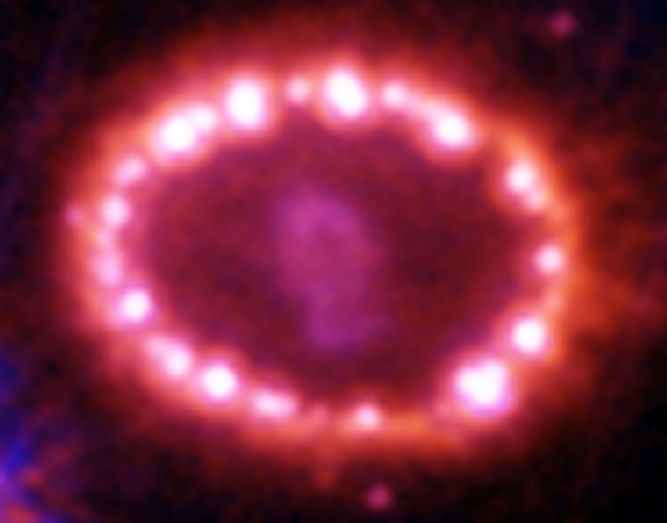SN1987A s Cosmic Pearls

Credit & Copyright: P. Challis,
R. Kirshner (CfA),
and B. Sugerman (STScI),
NASA
Explanation:
In February 1987, light from the brightest stellar explosion
seen in
modern times reached Earth --
supernova SN1987A.
This
Hubble Space Telescope
image from the sharp Advanced
Camera for Surveys taken in November 2003 shows
the explosion site over 16 years later.
The
snap shot
indicates that the supernova
blast wave
continues to impact a pre-existing, one light-year wide
ring of material, and the
nascent central
supernova remnant
continues to expand.
Like
pearls on a cosmic necklace, bright hot spots
produced as the
blast wave heats material up to millions of degrees began to appear
on the ring in the mid 1990s and have been followed
across the spectrum
by astronomers ever since.
Supernova SN1987A lies in the
Large Magellanic Cloud,
a neighboring galaxy some 170,000 light-years away.
That really does mean that the explosive event -
the core collapse and detonation of a star about 20 times as massive
as the Sun - occurred
170,000 years before February 1987.
Authors & editors:
Robert Nemiroff
(MTU) &
Jerry Bonnell
(USRA)
NASA Web Site Statements, Warnings,
and Disclaimers
NASA Official: Jay Norris.
Specific
rights apply.
A service of:
LHEA at
NASA /
GSFC
& Michigan Tech. U.

